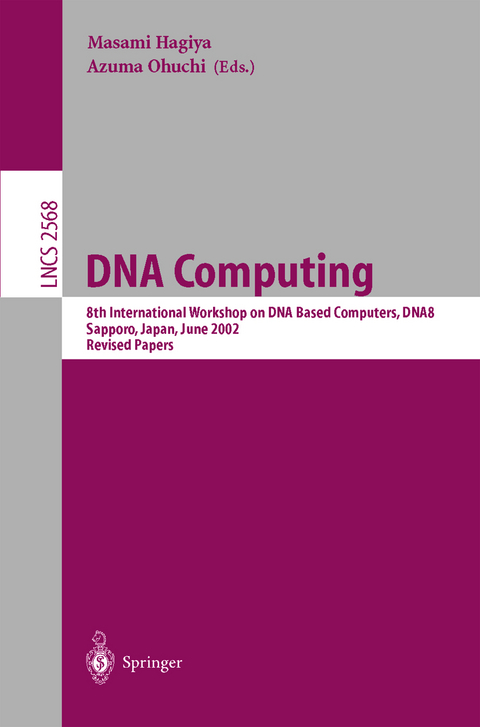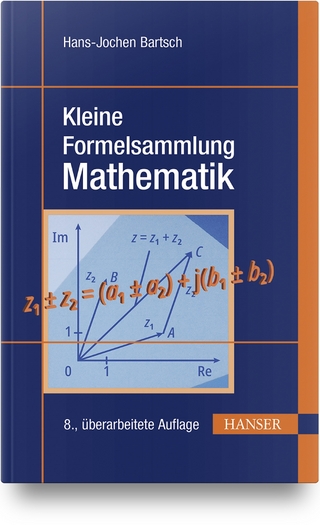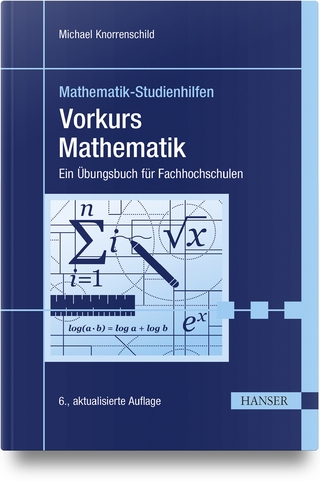
DNA Computing
Springer Berlin (Verlag)
978-3-540-00531-5 (ISBN)
Self-assembly and Autonomous Molecular Computation.- Self-assembling DNA Graphs.- DNA Nanotubes: Construction and Characterization of Filaments Composed of TX-tile Lattice.- The Design of Autonomous DNA Nanomechanical Devices: Walking and Rolling DNA.- Cascading Whiplash PCR with a Nicking Enzyme.- Molecular Evolution and Application to Biotechnology.- A PNA-mediated Whiplash PCR-based Program for In Vitro Protein Evolution.- Engineering Signal Processing in Cells: Towards Molecular Concentration Band Detection.- Applications to Mathematical Problems.- Temperature Gradient-Based DNA Computing for Graph Problems with Weighted Edges.- Shortening the Computational Time of the Fluorescent DNA Computing.- How Efficiently Can Room at the Bottom Be Traded Away for Speed at the Top?.- Hierarchical DNA Memory Based on Nested PCR.- Binary Arithmetic for DNA Computers.- Implementation of a Random Walk Method for Solving 3-SAT on Circular DNA Molecules.- Version Space Learning with DNA Molecules.- DNA Implementation of Theorem Proving with Resolution Refutation in Propositional Logic.- Universal Biochip Readout of Directed Hamiltonian Path Problems.- Nucleic Acid Sequence Design.- Algorithms for Testing That Sets of DNA Words Concatenate without Secondary Structure.- A PCR-based Protocol for In Vitro Selection of Non-crosshybridizing Oligonucleotides.- On Template Method for DNA Sequence Design.- From RNA Secondary Structure to Coding Theory: A Combinatorial Approach.- Stochastic Local Search Algorithms for DNA Word Design.- NACST/Seq: A Sequence Design System with Multiobjective Optimization.- A Software Tool for Generating Non-crosshybridizing Libraries of DNA Oligonucleotides.- Theory.- Splicing Systems: Regularity and Below.- On the Computational Power of Insertion-Deletion Systems.- Unexpected Universality Results for Three Classes of P Systems with Symport/Antiport.- Conformons-P Systems.- Parallel Rewriting P Systems with Deadlock.- A DNA-based Computational Model Using a Specific Type of Restriction Enzyme.- Time-Varying Distributed H Systems of Degree 2 Can Carry Out Parallel Computations.
| Erscheint lt. Verlag | 5.2.2003 |
|---|---|
| Reihe/Serie | Lecture Notes in Computer Science |
| Zusatzinfo | XII, 344 p. |
| Verlagsort | Berlin |
| Sprache | englisch |
| Maße | 155 x 233 mm |
| Gewicht | 508 g |
| Themenwelt | Mathematik / Informatik ► Informatik |
| Mathematik / Informatik ► Mathematik ► Allgemeines / Lexika | |
| Schlagworte | Algorithm analysis and problem complexity • algorithms • Biocomputing • Bioinformatics • coding theory • DNA Algorithms • DNA-based computing • DNA Computers • DNA computing • Evolutionary Computing • Evolutionary Systems • Hardcover, Softcover / Informatik, EDV/Informatik • HC/Informatik, EDV/Informatik • Logic • Membrane Systems • Molecular Biology • molecular computing • Nano-technology • Optimization • proving • Resolution • Self-Organization • theorem proving |
| ISBN-10 | 3-540-00531-5 / 3540005315 |
| ISBN-13 | 978-3-540-00531-5 / 9783540005315 |
| Zustand | Neuware |
| Haben Sie eine Frage zum Produkt? |
aus dem Bereich


